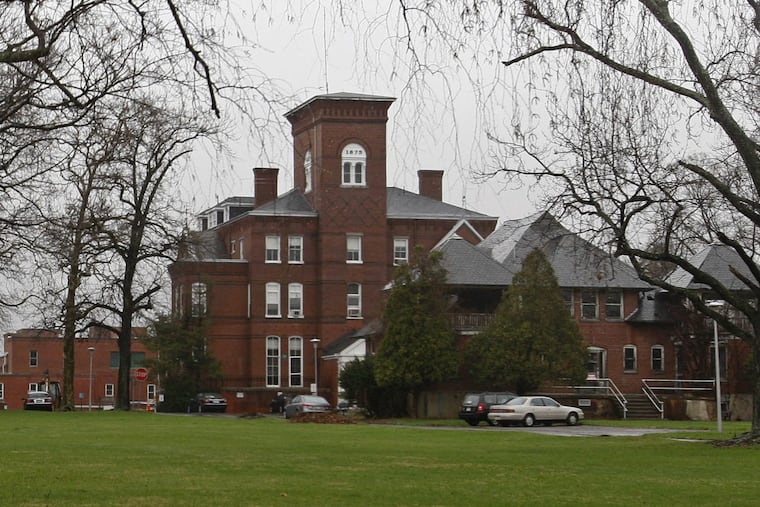America’s mental health treatment crisis demands action | Editorial
The plight of people struggling with mental illness and homelessness, and the murder of a patient in a Pennsylvania psychiatric hospital, point to a strained system that fails those who need help.

The death earlier this summer of a mentally ill Scranton man who authorities said was killed by his roommate at Norristown State Hospital is yet another sad symptom of this nation’s woefully inadequate system to help people whose medical conditions have made them a danger to both themselves and others.
Jacob Gonzalez, 25, diagnosed with schizophrenia, bipolar disorder, and depression, was killed the day before a scheduled July 15 court hearing to determine his competence to leave the state-run psychiatric hospital and stand trial for breaking into a doctor’s office in November to seek shelter from the cold.
Authorities said another patient, Kyle Samuels-Robey, went to nurses to ask for ice for a swollen hand and told them he had choked Gonzalez. Samuels-Robey, 34, of West Philadelphia, was also diagnosed with schizophrenia, bipolar disorder, and depression. He had been committed to mental institutions for more than a decade.
The most egregious aspect of the state hospital’s failure to ensure Gonzalez’s safety was its staff’s apparent disregard for rules requiring room checks every 15 minutes. Video surveillance showed no one checked on Gonzalez and Samuels-Robey between 8 and 9:15 p.m. Shortly before 9:30, Samuels-Robey made his confession to nurses.
This was not the first time Norristown State Hospital has been in trouble.
» READ MORE: Trump shooter’s history underscores the need for more mental health resources in schools | Editorial
The 144-year-old mental institution was cited in 2018 for having beds, doorknobs, and shower grab bars that inmates might use to take their own lives. Two years ago, its employees accused the hospital of abusing patients and encouraging their violent outbursts.
That type of patient neglect and mistreatment sparked the national movement more than 50 years ago to deinstitutionalize mental health patients. As a result, the more than a half-million patients in mental hospitals in 1955 were reduced to less than 60,000 by 1998. By 2020, however, that number had risen to 125,000 patients, and thousands more need institutional help.
Based on wait lists and other demographics, researchers say 60 psychiatric beds per 100,000 persons are optimal, and 30 beds should be the minimum. But America falls woefully short of either goal, with only 18 beds per 100,000, including beds in general hospitals. Pennsylvania has 29 beds per 100,000, and New Jersey has 22.
Hospital emergency rooms with too few psychiatric beds are routinely overwhelmed by people experiencing a mental crisis. Too often those patients are “treated and streeted” prematurely, which may lead to violent behavior aimed at others or themselves after their discharge, including suicide.
In fact, the Treatment Advocacy Center points out that a person with a severe mental illness is more likely to be a victim of violence than a perpetrator. While they admit the statistic is hard to calculate with precision, experts estimate that up to 56% of people with severe mental illness have experienced violent victimization within the last year, including theft, emotional abuse, sexual assault, and homicide.
Many of these victims were part of what experts 20 years ago called a “new generation of severely mentally ill persons” who instead of being committed to institutions were too often left on the street. Today, there’s nothing new about people who are mentally ill being homeless. Both their plight and the inexcusable murder of a patient in a Pennsylvania psychiatric hospital suggest America’s mental health system needs better attention.
» READ MORE: Mobile crisis units are a key resource for vulnerable Philadelphians | Opinion
“[W]e know today that the community is not necessarily the most benign treatment site for all mentally ill people at all times and that access to hospital care for those who need it, for as long as they need it, is absolutely essential to the success of deinstitutionalization.” That spot-on assessment — made 20 years ago by psychiatrists Leona L. Bacharach and H. Richard Lamb — remains an unheeded call for action.
Several fronts must be addressed to produce a more effective mental health system.
Institutions cannot be allowed to operate under the same inadequate standards that led to their mass closure decades ago. More institutional settings are needed for people on waiting lists who too often end up homeless or in jail. Better programs must be developed, and housing provided for people who, with the right intervention, can avoid commitment.
The nation’s mental health system seems to only get attention after a mass shooting. Gun rights proponents, in particular, are quick to blame the perpetrator’s mental state rather than the easy availability of a rapid-firing weapon as the problem. Even so, their lip service never leads to measures that dramatically improve the likelihood of a mentally unstable person getting help before a mass murder occurs.
In the long course of the current presidential election, little is being said about America being on track for its fifth year in a row with more than 600 mass shootings in which four or more people were killed. Many of those crimes were likely carried out by someone who never got the mental health assistance they needed.
It’s time to stop talking about a more effective mental health system. Let’s create it.